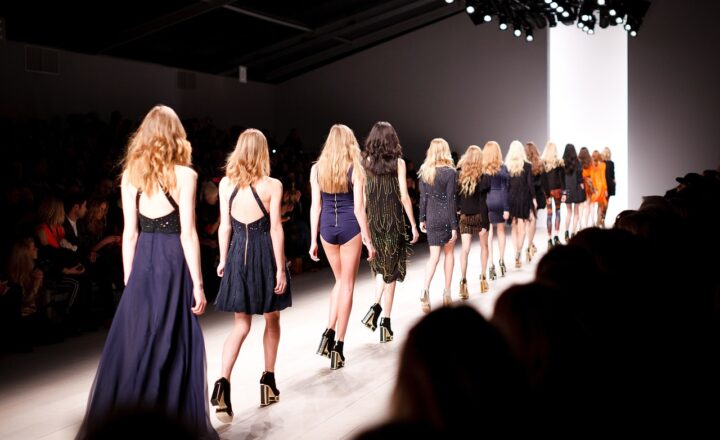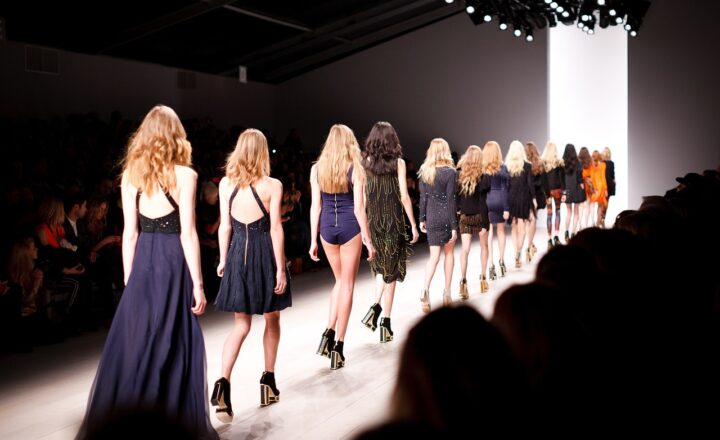
Fashion is often considered a mirror reflecting the cultural shifts and societal transformations that define specific eras. Every decade brings its own unique style, influenced by political events, economic conditions, social changes, and technological advancements. This article explores how fashion has evolved through the decades, highlighting key trends, influential designers, and the cultural undercurrents that shaped clothing choices from the 1920s to the present day.
The 1920s: The Roaring Twenties
The 1920s were a time of tremendous change, characterized by liberation and a break away from traditional norms. The end of World War I ushered in a new social order that embraced freedom and modernism. Fashion took a bold turn as women started to wear shorter hemlines, dubbed the flapper dress, which represented their newfound independence.
- Key Trends: Flapper dresses, bobbed hair, cloche hats, and menswear-inspired outfits became popular, emphasizing androgyny and a carefree attitude.
- Influential Designers: Coco Chanel revolutionized women’s fashion with her relaxed silhouettes, while Paul Poiret introduced styles that liberated women from corsets, favoring more natural shapes.
This decade left an indelible mark on fashion, paving the way for styles that embraced comfort and individual expression.
The 1930s: The Great Depression and Hollywood Glamour
As the Great Depression set in, fashion reflected a mixture of practicality and escapism. The financial crises led to more subdued styles, yet Hollywood’s silver screen made glamorous styles desirable.
- Key Trends: Bias-cut dresses, elegant evening gowns, and palazzo pants became popular. Fabrics such as silk and satin were used for special occasions, highlighting a sophisticated aesthetic.
- Influential Designers: Elsie Cobb and Madeleine Vionnet played significant roles in defining formal wear, while designers such as Adrian brought vibrancy to Hollywood-style clothing, blending fantasy with wearability.
Fashion during the 1930s emphasized elegance and femininity, even amidst hardship, showcasing resilience through style.
The 1940s: War Time and Utility Fashion
World War II had a significant impact on fashion, with fabric rationing leading to practical and utilitarian clothing. Women entered the workforce in droves, which influenced what they wore.
- Key Trends: Utility clothing, robust silhouettes, and practical designs dominated. The New Look by Christian Dior in the late ’40s reintroduced femininity with full skirts and fitted waists, marking a transition to post-war luxury.
- Influential Designers: Christian Dior’s New Look became iconic, symbolizing hope and change, while utility clothing by British designers emphasized functionality and resourcefulness.
The 1940s laid the foundation for modern women’s fashion, blending functionality with emerging femininity in post-war expression.
The 1950s: A Decade of Prosperity and Youth Culture
The post-war economic boom led to a surge in consumerism and youth-focused culture. Fashion in the 1950s was colorful and vibrant, reflecting societal optimism.
- Key Trends: Full skirts, stiletto heels, and casual looks like rockabilly style became prevalent. Teenage culture blossomed, leading to the popularity of denim and leather jackets.
- Influential Designers: Dior continued to have a profound impact with his cinched waist designs. Designers such as Balenciaga also gained fame for their innovative couture dresses.
The fashion scene of the 1950s emphasized individuality and the celebration of youth, influencing today’s casual styles.
The 1960s: Revolution and the Rise of Counterculture
The 1960s were marked by a social revolution challenging the status quo. Fashion reflected the upheaval, incorporating political messages and counterculture into mainstream style.
- Key Trends: Mod fashion, psychedelic prints, mini skirts, and unisex styles took center stage. The decade also popularized bold patterns and colors, breaking away from previous aesthetic norms.
- Influential Designers: Mary Quant became known for the mini skirt, while designers like André Courrèges pushed boundaries with futuristic styles and cutting-edge silhouettes.
The 1960s invited creativity and self-expression through provocative fashion, influencing many aspects of modern style today.
The 1970s: A Decade of Self-Expression and Individuality
The 1970s were synonymous with experimentation in fashion, driven by the rise of various subcultures, including punk, disco, and bohemian styles.
- Key Trends: Bell-bottoms, platform shoes, and maxi dresses became popular. Bright colors and eclectic prints characterized the era, leading to a variety of styles that sought to push boundaries.
- Influential Designers: Halston became recognizable for his upscale, glamorous designs, while Vivienne Westwood pioneered punk fashion, merging art and style in transformative ways.
Fashion in the 1970s allowed individuals to express themselves uniquely, blending diverse styles to create a personal aesthetic.
The 1980s: Bold Statements and Glamour
The 1980s embraced boldness and extravagance. From power suits to punk rock, the decade was about making statements. Fashion became synonymous with personal branding and celebrity culture.
- Key Trends: Shoulder pads, neon colors, and oversized silhouettes. Activewear became fashionable, with athleisure starting its rise to prominence in everyday wear.
- Influential Designers: Gianni Versace and Thierry Mugler gained fame for their opulent, adventurous designs. Designers connected high fashion with pop culture, creating iconic moments on runways and in media.
The 1980s celebrated individuality and glamour, leaving a lasting legacy on fashion’s commercial landscape.
The 1990s: Minimalism, Grunge, and Hip-Hop Culture
The 1990s witnessed a cultural shift towards minimalism and the embrace of diverse styles from different musical genres, including grunge and hip-hop. Fashion became more accessible and eclectic.
- Key Trends: Grunge style with flannel shirts, combat boots, and distressed jeans. The rise of streetwear and logos signified the merging of fashion with the music industry.
- Influential Designers: Designers like Marc Jacobs and Calvin Klein popularized minimalist designs that focused on clean lines and neutral colors, while brands like Tommy Hilfiger brought hip-hop style to the mainstream.
The 1990s marked a shift towards individuality and comfort, influencing both casual and formal wear in contemporary fashion today.
The 2000s: Fast Fashion and Globalization
The 2000s brought the rise of fast fashion, making trendy clothing accessible to the masses. The influence of technology and global trends defined this era, leading to rapid changes in consumer habits.
- Key Trends: Low-rise jeans, graphic tees, and logo-centric clothing became mainstream. Celebrities heavily influenced style, with reality TV shaping trends in real-time.
- Influential Designers: Designers such as Alexander McQueen and Dolce & Gabbana pushed creative boundaries while fast fashion retailers like Zara and H&M revolutionized how fashion was consumed and marketed.
The 2000s era led to a cultural conversation about sustainability and ethical fashion that continues today.
The 2010s to Present: Sustainability, Inclusivity, and Technological Integration
In recent years, fashion has increasingly evolved towards sustainability, body positivity, and incorporating technology into daily wear. The fashion industry is facing new challenges, from climate change to promoting social inclusion.
- Key Trends: Sustainable brands prioritize eco-friendly materials and ethical production. Additionally, the rise of gender-neutral clothing reflects changes in societal norms regarding identity and expression.
- Influential Designers: Stella McCartney is known for her sustainable fashion practices. Designers like Telfar Clemens have also made waves with inclusive branding that resonates with diverse audiences.
Fashion today is about bridging gaps, promoting diversity, and addressing critical global issues, indicating an evolving narrative that will continue to shape future trends.
Conclusion
Fashion through the decades not only embodies aesthetic shifts but also captures the essence of cultural and social changes that define humanity. From the daring flappers of the 1920s to today’s sustainable brand initiatives, fashion serves as a powerful vehicle for expression, showcasing how styles have continually evolved and intertwined with the human experience. As we move forward, it’s essential to reflect on these styles not only as histories of clothing but as narratives of cultural evolution and social identity.






